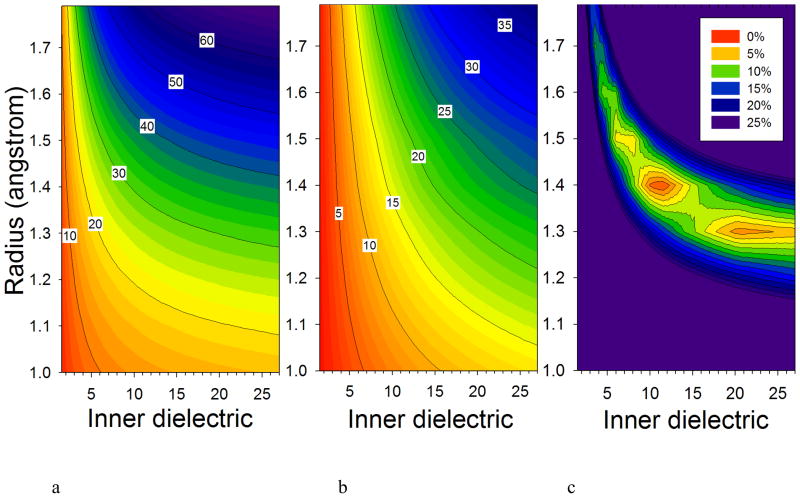Figure 2.
The EPIC model behavior is explored for Cl2. The average polarizability (a) and the anisotropy (b) isolines (in a.u.) are plotted as a function of the Cl atomic radius, used to define the vdW surface, and the value of the inner dielectric. The target Cl2 B3LYP values are 31.43 (average) and 18.24 (anisotropy) (c.f. Table 1). The polarizability tensor error function isolines in (c) identify the regions where the EPIC model matches the B3LYP polarizability tensor. The external dielectric is set to one and the inter-nuclear distance of Cl2 is fixed at 2.05Å. These figures show that a high dielectric value is required to match the QM anisotropy, and that a number of minima can be found on the error hypersurface.

